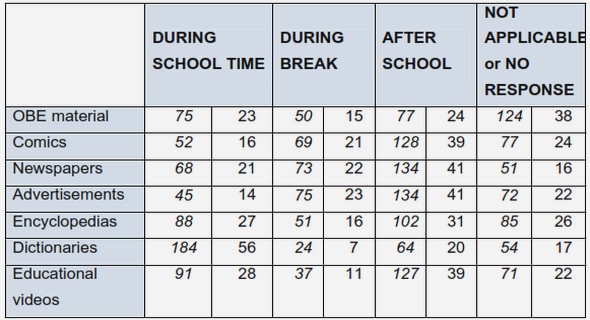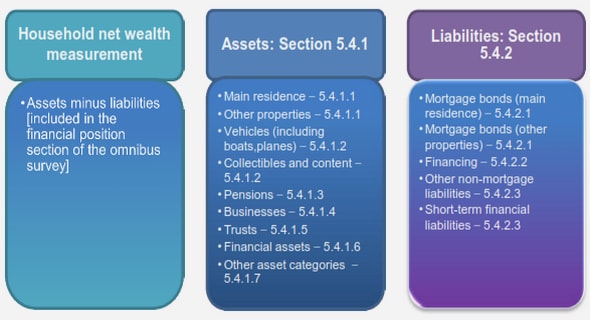Get Complete Project Material File(s) Now! »
Introduction
Walter Thompson is a New York-based composer and saxophonist who derived the basic idea of using non-verbal signals for directing the course of a live ensemble performance in that city in the mid-1980s. Thompson (2006:12) describes the genesis of Soundpainting as follows: Thompson moved to New York City in 1980 and formed the Walter Thompson Big Band (now the Walter Thompson Orchestra) in 1984. During the first year with his orchestra, while conducting a performance in Brooklyn, New York, Thompson needed to communicate with the orchestra in the middle of one of his compositions. They were performing a section of improvisation where Trumpet 2 was soloing. During the solo, Thompson wanted to have one of the other trumpet players create a background. Not wanting to emulate bandleaders who yell or speak out loud to their orchestra, Thompson decided to use some of the signs he had experimented with in his Woodstock days.
Creation, mediation, and reception
Hamm’s triad (that is, the “three-fold series of processes” described above) is useful as shorthand for describing the often-complex processes underlying musicking and its progress en route to reception. The production of the musical artefact at the centre of his discussion—Lionel Richie’s song All Night Long (All Night)—takes place in a social milieu far removed from the audience that it reaches through the medium of radio. In this particular historical instance,3 factors of distance both in time and space stretch the line of communication between creator and receiver. Hamm goes on to suggest that historical musicology, especially as practised in the United States, has focused its attention mainly on the stage of creation, and that studies of mass media and some branches of social science tend to examine the area of mediation and performance (the second part of the triad). To some extent Hamm’s preoccupations are far from unique: it is, after all, against this background or shift of focus that are ushered in the concerns of the so-called “New Musicology.” With its origins in neo-Marxist critical theory, this methodology strives to acknowledge the social element in music by focussing on process rather than product, thereby emphasizing the people practising music, circumstances under which musicking takes place, the media influencing such practices and, in short, the entire web of relations in which musicking is located.
Grammar
Wittgenstein adopts the term ‘grammar’ in his quest to describe the workings of this public, socially governed language, using it in a somewhat idiosyncratic manner. Grammar, usually taken to consist of the rules of correct syntactic and semantic usage, becomes, in Wittgenstein’s hands, the wider—and more elusive—network of rules which determine what linguistic move is allowed as making sense, and what isn’t. (Biletzki and Matar 2005) In the light of the above statement, Wittgenstein’s adoption of the term « grammar » suggests the possibility of likewise conceiving of music as a « public, socially governed language. »
This raises in turn a question with regard to who exactly might be considered to be the custodians of this musical language: the author suggests that this role is taken up by the loose community of musicians, listeners, and marketers of jazz, whose viewpoint tends to be somewhat conservative. The conservatism of this community is evident in conventional approaches to jazz pedagogy, which mostly takes a no-nonsense approach to the validity of linguistic moves within the language-game of tonal jazz. The individual who takes on the community therefore also takes on the rules of the game and in language, « the formidable adversary of connotation, » in Lyotard’s terms.
Results and procedures
In an interview (Prasad 2002), Eberhard Weber emphasizes the importance of the finished product over the process of creation: I’m only interested in results, not in procedures to get somewhere.92 In the good old days, when one had the chance to go to jazz clubs and there were jam sessions, some would go onstage, including myself. We would play some free improvisation or modal improvisation for a half-hour or so and it was really dynamic, wonderful and perfect for that moment. Then I would put the bass down and leave the stage. The musicians would look at me and say « What’s going on? Why are you leaving? » I said « Because we just had a nice half-hour and it was perfect. If we continue, it’s only going to be repetition. » So, again, I’m not interested in playing, but having results. That’s the big difference between me and other musicians. Weber’s focus on results, in his opinion, illustrates a « big difference » between himself and other musicians. His viewpoint is an atypical one for an improvising musician, opposed (as it appears to be) to so much of the radicalism of the free jazz aesthetic. These sentiments were echoed in a conversation with the author (Munich, 1980) in which Weber discussed his move from experimentation as a player in the 1960s German free jazz scene93 to the kind of organized (formal) compositional structures evident in his first solo recording The Colours of Chloë (1974).
What was performance?
The distinction between music as work and as event re-situates this discussion in the site of performance as activity. For the author, however, this is not an unproblematic move, because now the necessity very forcibly arises to define what exactly is meant by performance. In this light the title of this section deliberately echoes that of McClary’s provocative question, in Conventional Wisdom (2001:63): What was tonality? McClary argues, not uncontroversially, that common practice tonality is linked to the social formations within which it arose and therefore it reflects (or enacts) in musical form the dominant ideology of the Enlightenment. She focuses on tonality (2001:65ff) as « the convention that undergirds and guarantees all the others, discussing how it constructed musical analogs to such emergent ideals as rationality, individualism, progress, and centered subjectivity. Far from merely reflecting their times, these musical procedures participated actively in shaping habits of thought on which the modern era depended. »
Table of contents :
- Acknowledgements
- Dedication
- Summary
- Keywords
- Notes to the reader
- Chapter 1 : Research outline
- 1.1 Introduction
- 1.2 Background and justification
- 1.3 Research questions
- 1.4 Purpose and aims
- 1.5 Justification
- 1.5.1 A note on musicking
- 1.5.2 Creation, mediation, and reception
- 1.5.3 The role of the conductor in orchestral performance
- 1.5.4 Free jazz as ensemble performance
- 1.5.5 The role of the Soundpainter in ensemble performance
- 1.5.6 The Soundpainter as ensemble director
- 1.6 Chapter divisions
- 1.7 Methodology
- 1.7.1 Survey of scholarship
- 1.7.2 Theoretical frameworks
- 1.7.3 Theories of improvisation
- 1.7.4 Group improvisation as a collaborative process
- 1.8 Relevance of this study
- 1.9 Scope and limits
- 1.10 Glossary
- Chapter 2 : Music as sign-system—a survey of scholarship
- 2.1 Introduction: Semiotics and linguistic theory
- 2.1.1 Saussure’s concept of language as a sign-system
- 2.1.2 Peirce’s typology of signs
- 2.1.2.1 Icon
- 2.1.2.2 Index
- 2.1.2.3 Symbol
- 2.1.3 Structuralism (revealing deep codes)
- 2.1.3.1 Roland Barthes and structuralism
- 2.1.3.2 The structure of serialism
- 2.1.3.3 Schenkerian analysis and after
- 2.1.3.4 New Criticism
- 2.1.4 Poststructuralism and the play of the text
- 2.1.4.1 The death of the author
- 2.1.4.2 Readerly and writerly texts
- 2.1.4.3 Undercoding and overcoding
- 2.1.5 On deconstruction
- 2.1.6 Wittgenstein on language
- 2.1.6.1 Meaning as use
- 2.1.6.2 Language-games
- 2.1.6.3 Grammar
- Chapter 3 : Music as work and event
- 3.1 Introduction: Spoken and written language
- 3.1.1 Results and procedures
- 3.1.2 Intractable questions
- 3.2 Music as work: The semiotics of notation
- 3.3 Music as event: The semiotics of performance
- 3.3.1 What was performance?
- 3.3.2 « Saying something »
- 3.4 Music and the body
- 3.4.1 The instrument as extension of the performer
- 3.4.2 The erasure of the body
- 3.4.3 Musicking, physicality, and the mind-body problem
- Chapter 4 : Towards a language-based model for improvised music
- 4.1 Introduction: Music and/as language
- 4.1.1 Defining improvisation
- 4.1.2 « Playing by ear »
- 4.1.3 The social semiotics of improvisation
- 4.1.4 Jazz and signification
- 4.1.4.1 Signifyin(g) and rhetoric in improvised music
- 4.1.4.2 Music as communal activity
- 4.1.4.3 Call and response
- 4.1.4.4 Intonation as an affective device
- 4.1.4.5 Toy (and little) instruments
- 4.1.4.6 Timbral play and agency
- 4.1.4.7 The fourth wall
- 4.1.4.8 Improvisation and freedom
- 4.2 Language acquisition in improvised music
- 4.2.1 The repertoire
- 4.2.1.1 The blues
- 4.2.1.2 Standards: the language of the tribe
- 4.2.1.3 “Rhythm changes » and the contrafact
- 4.2.1.4 Pedagogical methods for improvisation
- 4.2.1.5 Third Stream
- 4.3 Towards a model for improvised music
- 4.3.1 Language-games in improvised music
- 4.4 Towards an ethnomusicology of improvisation
- Chapter 5 : Creativity, collaboration, and communication in improvised
- music
- 5.1 Five characteristics of group improvisation
- 5.1.1 Creativity myths
- 5.1.1.1 Creativity as a product of the unconscious
- 5.1.1.2 Creativity as representing the inner spirit of the individual
- 5.1.1.3 Creativity as spontaneity
- 5.1.1.4 Creativity as originality
- 5.1.2 Individual and group flow
- 5.2 Collaboration and competition in improvised music
- 5.3 Communication in improvised music
- 5.3.1 Shannon’s theory of communication
- 5.3.2 Cybernetics and the virtual orchestra
- 5.4 Musically configured space: power and hierarchy
- 5.4.1 Social topology and organizational structure
- 5.4.2 Improvising big bands
- 5.5 Deconstructing noise and silence
- 5.5.1 Sound and silence as aesthetic oppositions
- 5.5.2 Noise, signifyin(g), quotation, and the postmodern
- 5.5.3 Noise in the political economy of music
- 5.5.3.1 Sacrifice (metaphor)
- 5.5.3.2 Representation (metonymy)
- 5.5.3.3 Repetition (synecdoche)
- 5.5.3.4 Composition (irony)
- 5.5.4 Cage, noise, and the aleatoric
- 5.5.5 Soundpainting, noise, and the avant-garde
- Chapter 6 : Soundpainting—history, process, and system
- 6.1 Soundpainting: a brief history
- 6.1.1. « A very elaborate series of chord changes »
- 6.1.2 « Free to be not free »
- 6.1.3 Soundpainting and Abstract Expressionism
- 6.1.4 Soundpainting and quotation
- 6.1.5 Soundpainting gestures as iconic signs
- 6.1.6 Recursion in an improvisation by Charlie Parker
- 6.1.7 A note on palettes
- 6.1.8 Anthony Braxton and Walter Thompson
- 6.2 Soundpainting as collaborative process
- 6.2.1 Peer learning
- 6.2.2 Soundpainting as live composition
- 6.2.2.1 Soundpainting and indeterminacy
- 6.2.2.2 Soundpainting and extended techniques
- 6.3 Soundpainting: language or system?
- 6.3.1 The syntax of Soundpainting
- 6.3.2 Soundpainting and other gesture-based music systems
- 6.3.2.1 Harmony Signing
- 6.3.2.2 John Zorn’s game pieces
- 6.3.2.3 Butch Morris and conduction
- 6.4 Soundpainting, conducting, and improvisation
- Chapter 7 : Conclusions and recommendations
- 7.1 Findings
- 7.2 Recommendations for further research
GET THE COMPLETE PROJECT
Soundpainting as a system for the collaborative creation of music in performance

